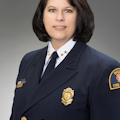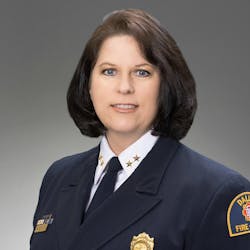No matter how prepared your agency was or wasn’t for the COVID-19 pandemic, it required a change in operations. One significant area that has been changed is communication. As much as we probably complained in the past about seemingly never-ending meetings, when we suddenly couldn’t hold any meetings, it became a problem.
Enter the world of virtual meetings that’s made possible via online software platforms for videoconferencing and file-sharing. Everyone suddenly became familiar with the programs Microsoft Teams, Skype, WebEx, Zoom and others. The question is: How have these programs helped to make EMS and fire agencies more effective during this crisis?
‘Eye to eye’
Of course, first responders must continue to work during these times. In fact, they become more critical. However, some or most of an agency’s staff might work from home. Certainly, other internal and external stakeholders work remotely. Communication can be accomplished through emails and telephone calls, but it still is more effective to see each other—even if it is through a camera. These virtual platforms also make it possible to share documents. After all, it is budget time, which is even more critical because of the economic effect of the pandemic. These platforms allow necessary collaborative projects to continue even during the COVID crisis.
There is something to be said about seeing the people who you work with to gauge how they are doing. We also know that much “communication” occurs through nonverbal cues. Virtual meetings, which give us that on a smaller scale, are a strong alternative to in-person staff meetings. They can be set up in minutes. That’s a distinct advantage when information quickly changes. Agencies regularly put out new information, policies, procedures, education and training to adapt to the new COVID research and guidelines. Virtual meetings allow all of this to be shared with supervisory personnel before it is presented to the agency at large.
No communication breakdown
Unfortunately, the capability to protect first responders from COVID-19 is tenuous. The virus has devastated some departments and has created a challenge for others. In Dallas, a small team works with members when they become sick or have a COVID exposure. Initially, we called each person at a station separately when someone became sick or the crew had an exposure to a COVID-positive patient. However, we realized that it was much more efficient to set up a virtual meeting to talk to everyone at once. It cut down on miscommunication and allowed their chain of command to be in the meeting, so there were no misunderstandings about instructions that were given to the crew.
The need to establish new policies and procedures for EMS responses to COVID makes quality assurance even more vital. Policies must be instituted quickly without an extended period of time for education and training. When there are concerns regarding a crew’s actions, medical directors can set up a virtual meeting, so everyone can review the patient report and clinical guidelines together.
One of Dallas’ successful uses of the Zoom platform is Fire Chief Dominque Artis and Medical Director Dr. Marshal Isaacs’ ability to hold virtual town hall meetings to answer members’ questions. It allows the department to hear directly from leadership the status of COVID in our department and community. Artis and Isaacs share the successes and the efforts that are underway. During a time of great uncertainty, leadership literally can see and speak to all members.
The benefits that have been discovered from engaging in virtual meetings should become the new normal. People have learned how easy this type of communication is, and it should replace most teleconferences. It allows meetings to be instantaneous and relieves participants of having to drive long distances. Meetings can be recorded for those who can’t attend.
Although only a few EMS agencies use video in the field to communicate with medical control (Editor’s note: See “Mobile Stroke Treatment” on page 46), the upsurge of this type of healthcare by physicians during COVID will lead to it becoming part of EMS in the future.
Not all business should be conducted via virtual meeting to avoid “Zoom fatigue.” However, it can provide many positive, innovative means of communication and collaboration that might not have been discovered if not for the necessity that has been required by COVID-19.
About the Author

Tami Kayea
Firefighter/Paramedic
Tami Kayea has been a firefighter and paramedic with Dallas Fire-Rescue Department for 22 years. She has risen through the ranks and is currently a deputy chief. Kayea holds a master’s degree in management and leadership and is a graduate of the Executive Fire Officer Program through the National Fire Academy.
